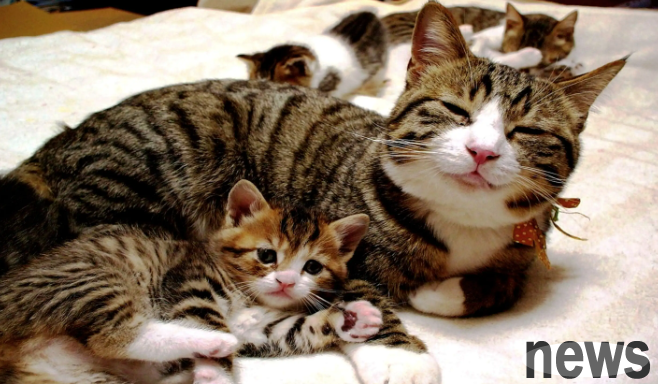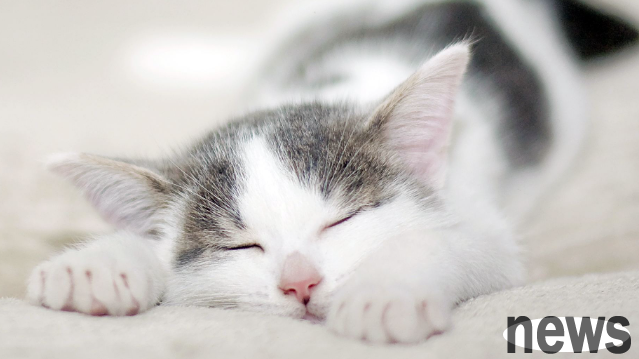How does cats cause ascites? Treatment of nutritional ascites for cats! Pet ascites is a very common clinical disease. Once this disease occurs, it is difficult to cure and has a high mortality rate. There are many causes of this disease. Generally...
How does cats cause ascites? Treatment of nutritional ascites for cats! Pet ascites is a very common clinical disease. Once this disease occurs, it is difficult to cure and has a high mortality rate. There are many causes of this disease. Generally speaking, malnutrition, liver and kidney diseases or renal attenuation are more common. I will share with you the treatment process of a more typical cat nutritional ascites in recent treatment.

1. Basic animal situation
The pear cat, about one year old, male, was found to be a stray cat. After the pet owner took it home, he has been kept in the basement for rats. He has been fed leftovers for a long time and has been relatively thin. However, his appetite and spirit are still normal. Recently, the cat found that he was listless, his appetite decreased, he drank a lot of water, unstable lying and standing, and his abdominal circumference was significantly increased, so he brought us to the hospital for treatment.
Figure 1 What is the ascites of a sick cat? Xiaopeng doctor popularizes the ascites that cats must be known for raising cats 2. Overall and general examination
1. Overall examination: Observe that the cat is extremely thin, the chest and ribs are clearly visible, the body temperature is 39 degrees Celsius, the abdominal circumference is enlarged and sagging, and the palpation has a strong sense of fluctuation. It is suspected that the abdominal cavity is hydrolyzed, and the diseased cat breathes rapidly when percussing the abdominal wall.
2. Puncture examination: Use a veterinary puncture needle to pierce the abdominal cavity, draining out light yellow and clear liquid.
3. Diagnosis:
According to the analysis of the medical history and clinical symptoms of the cat, due to the long-term consumption of low protein and single food, and in a dark, humid and unventilated basement, it leads to extremely poor nutrition and disordered metabolism of the body. Due to the lack of protein, the osmotic pressure of colloids in the blood is reduced, renal failure, protein leakage gastroenteritis, and low osmotic pressure, causing a large amount of fluid to enter the abdominal cavity to form ascites. Primary ascites caused by improper feeding management can be identified.
4. Treatment measures
1. After the cat lies on his back, he will disinfect the lower abdomen with the strongest abdominal tightness and then stab the 12# needle 3 to 5 cm into the disinfection area. You can see a light yellow liquid with a slight fishy smell coming out of the abdominal cavity. When 2/3 of the abdominal fluid is released, pull out the needle and press the needle hole with an iodine tincture cotton ball. Drain once a day, 3 to 4 times in a row. The last drainage can clean the fluid in the abdominal cavity.
2. Replenish fluids and diuretics. Apply appropriate body fluid supplementation according to the clinical symptoms of the affected cat. Ringer's solution or sugar saline can be intravenously injected, and VC, VB6, ATP, COA, dexamethasone, and antibiotics can be added to the liquid; appropriate amounts of diuretic drugs such as high sugar (10% glucose, mannitol, glucose anhydride) and furosemide (furosemide, furathimid) are added once a day.
3. Intravenous infusion of 18 or 17 amino acids, cat blood albumin can also be intravenously injected, once a day.
4. Feed foods with high protein content, such as eggs, milk, etc.; restrict drinking water or exercise; and the feeding environment should be dry and ventilated.
5. Treatment effect
After using the above treatment methods, the cat recovered its appetite, was energetic, and its abdominal circumference was significantly reduced. All the conditions were basically normal and discharged from the hospital was allowed. When discharged from the hospital, the owner was told to change the cat to a ventilated and lit place to raise it. Daily feeding should be more nutritious, especially protein intake.

6. Experience
1. Furosemide mainly acts on the ascending cortex of the loop of mastoid loop to inhibit the reabsorption of sodium and hydrogen ions, leaving a large amount of sodium and hydrogen ions in the tubular fluid, causing the osmotic pressure in the lumen to increase, and the corresponding water is also left in the lumen and discharged from the urinary tract, thus showing a significant diuretic effect, avoiding large amounts of water retention in the tissue and leakage from the serous cavity.
2. Mannitol is a tissue dehydrating agent that can increase plasma osmotic pressure and reduce tissue edema; mannitol has a diuretic effect and is not metabolized in the body. After glomerular filtration, it is rarely reabsorbed in the renal tubules. It plays an osmotic effect when renal failure. The dosage of mannitol should be moderate and the medication should be slow. Do not use high concentrations and large doses.
3. Dexamethasone has anti-inflammatory, anti-toxic, anti-allergic, and detoxifying effects; antibiotics have antibacterial, anti-inflammatory and improving renal function.
4. Compound amino acids and cat blood albumin can supplement a large amount of proteins missing in the body. Compound amino acids increase plasma colloidal osmotic pressure; glucose anhydride and albumin are colloidal osmotic pressure maintainers, and VB6 is involved in the metabolism of amino acids.
5. When draining and decompressing, do not extract too much liquid at a time, otherwise it may easily lead to intestinal adhesions. The discharge of fluid should not be too fast, because abdominal fluid accumulation occurs, and the blood in the blood vessels of the liver, stomach, intestines and other abdominal organs are squeezed into the blood vessels outside the chest and abdominal cavity, causing anemia of the lungs, stomach, intestines and chest abdominal organs. If the discharge of fluid is too fast, a large amount of blood can quickly pour into the chest and abdominal organs, causing dilation and congestion of arterioles and capillaries (called congestion after anemia), which is very likely to cause cerebral anemia and cause serious consequences. It is advisable to discharge naturally, but it takes a long time to drain the flow while infusion.
6. Although cat nutritional ascites are difficult to cure and have a high mortality rate, the focus is on prevention. In the process of raising pets on a daily basis, not only should the pet be filled but also should pay attention to nutritional matching. It is not a famous dog in time. When feeding, you should also pay attention to the protein in the diet that should not be too low, and ensure that the animals have good space for movement and sufficient light.